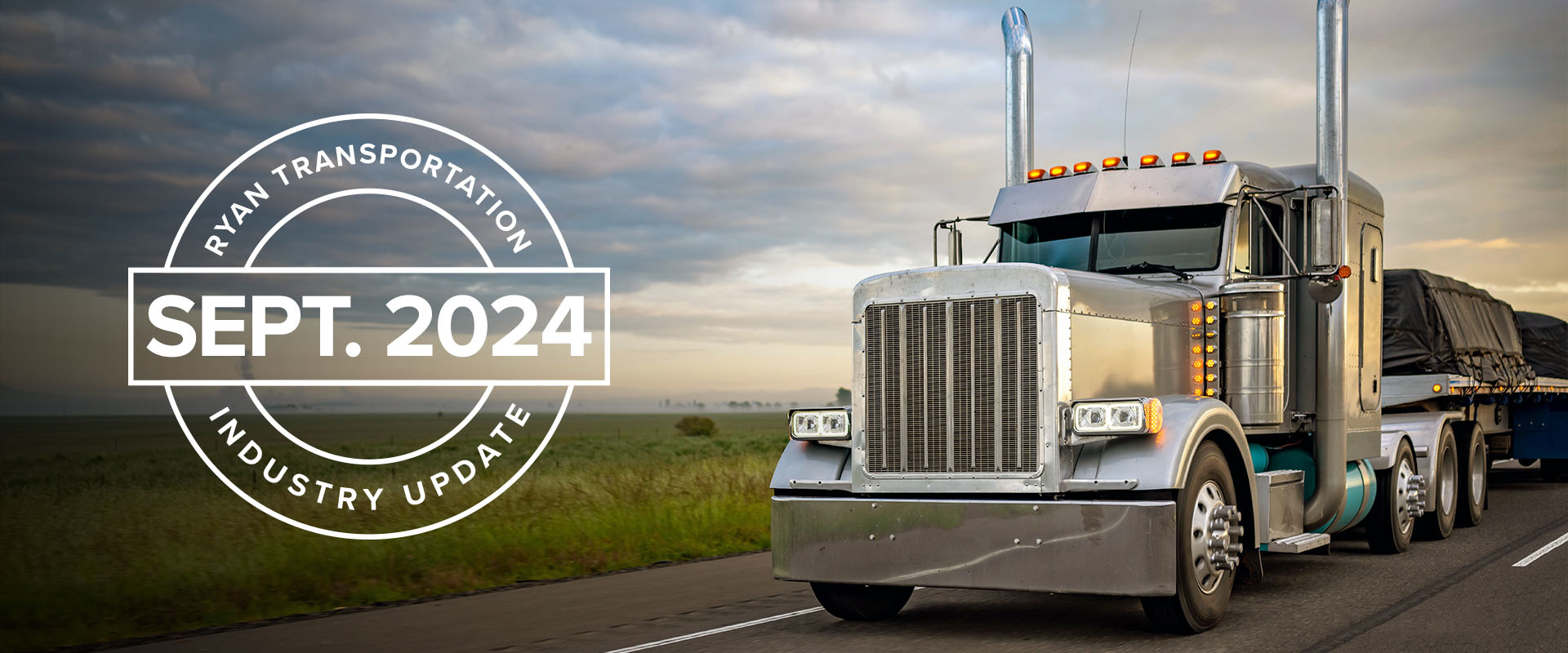
Executive Summary
Like the broader economic landscape, the transportation industry remains dynamic, with a mix of both positive and negative indicators, suggesting that a return to “normalcy” may be on the horizon.
On the economic side, there were signs of a cooling labor market in August, as job gains remained modest following downward revisions to June and July figures. These revisions were prompted by the Labor Department's report that job gains for the year ending in March 2024 were overstated by 818,000, or 28%. This reduced the average monthly job gains during that period to 174,000, down from the previously reported number of 242,000. Unemployment decreased slightly while the Federal Reserve’s preferred inflation gauge approached its 2% target, raising expectations of a potential interest rate cut of at least 0.25%, and possibly 0.50%, at its next meeting in September. Meanwhile, second-quarter GDP growth was revised upward by 0.2% to 3.0%, primarily because of stronger consumer spending. However, manufacturing activity continued to contract, hindered by weak demand, rising inventories and uncertainty surrounding the upcoming election.
In the transportation sector, the truckload market continues to face challenging rate conditions despite stable freight volumes. Although reductions in supply have reintroduced some seasonality, the lack of significant changes in rates or tender rejections leading up to the Labor Day holiday indicates that further capacity reductions are necessary. The intermodal sector is gaining momentum as volumes approach 2021 peak season levels, driven by strong import activity and resilient consumer spending. Despite this improvement, weak truckload conditions have kept rate growth subdued.
As the industry moves into Q4 and the pre-holiday peak shipping season, the outlook for transportation conditions remains uncertain. Weak domestic manufacturing continues to be the primary headwind for truckload demand, while the growing number of carriers, in anticipation of higher freight volumes, delays any rate recovery. Amid rising imports, the potential strike by the International Longshoremen’s Association (ILA) at East and Gulf Coast ports is likely to create capacity shortages and trigger rate spikes in the West.
Industry Overview: August Key Figures (YoY)
| Truck Data Points | YoY% Change |
| DAT Spot Rates (incl. FSC) | -3.9 q |
| Fuel Prices | -15.3 q |
| ACT Class 8 Preliminary Orders | 16.0 p |
| ATA NSA Truck Tonnage* | 2.7 p |
| Cass Freight Index** | -3.2 q |
| Cass Freight Shipments | -1.1 q |
| Cass Freight Expenditures | -6.2 q |
Main Takeaways
Economy
Manufacturing activity in the U.S. contracted in August but at a slower pace compared to July, as weakening demand and increasing inventories stifled production. Continue reading...
Truckload Rates
Spot rates erased their summer gains in August while contract rates remained stable, pushing the contract-to-spot spread to the higher end of the pre-pandemic average range. Continue reading...
Truckload Demand
Freight volumes remained stable in August, registering slightly higher compared to July and providing a solid base ahead of the pre-holiday peak shipping season. Continue reading...
Truckload Supply
Tender rejections reflected continued contractions in supply as it searches to balance out with demand, but indicated further reductions are required to effect any meaningful change in the market. Continue reading...
Truckload Capacity Outlook
The net change in the carrier population turned positive in August, driven by an increase in new entrants, while revocations fell significantly. Continue reading...
Fuel
The benchmark price of fuel continued its downward trend in August as excess supply remains unencumbered by weak demand and economic uncertainty. Continue reading...
Dry Van
Dry van conditions declined in August as both rates and volumes trended lower compared to the previous month. Continue reading...
Reefer
Reefer activity trended in line with van activity, as rates and volumes dipped in August but were higher YoY. Continue reading...
Flatbed
The flatbed sector continues to perform the worst of the three major modal types, as rates and volumes declined in August and remain below YoY levels. Continue reading...
Intermodal
Intermodal volumes continued to improve in August, approaching levels near their 2021 peak season despite rates remaining historically low. Continue reading...
Further Reading
- Transport Topics: Private Fleets Ship Record 75% of Owners’ Outbound Freight
- Supply Chain Management Review: Assessing the potential of a port strike
- Transport Topics: Class 8 Truck Orders Drop 16% Year Over Year in August